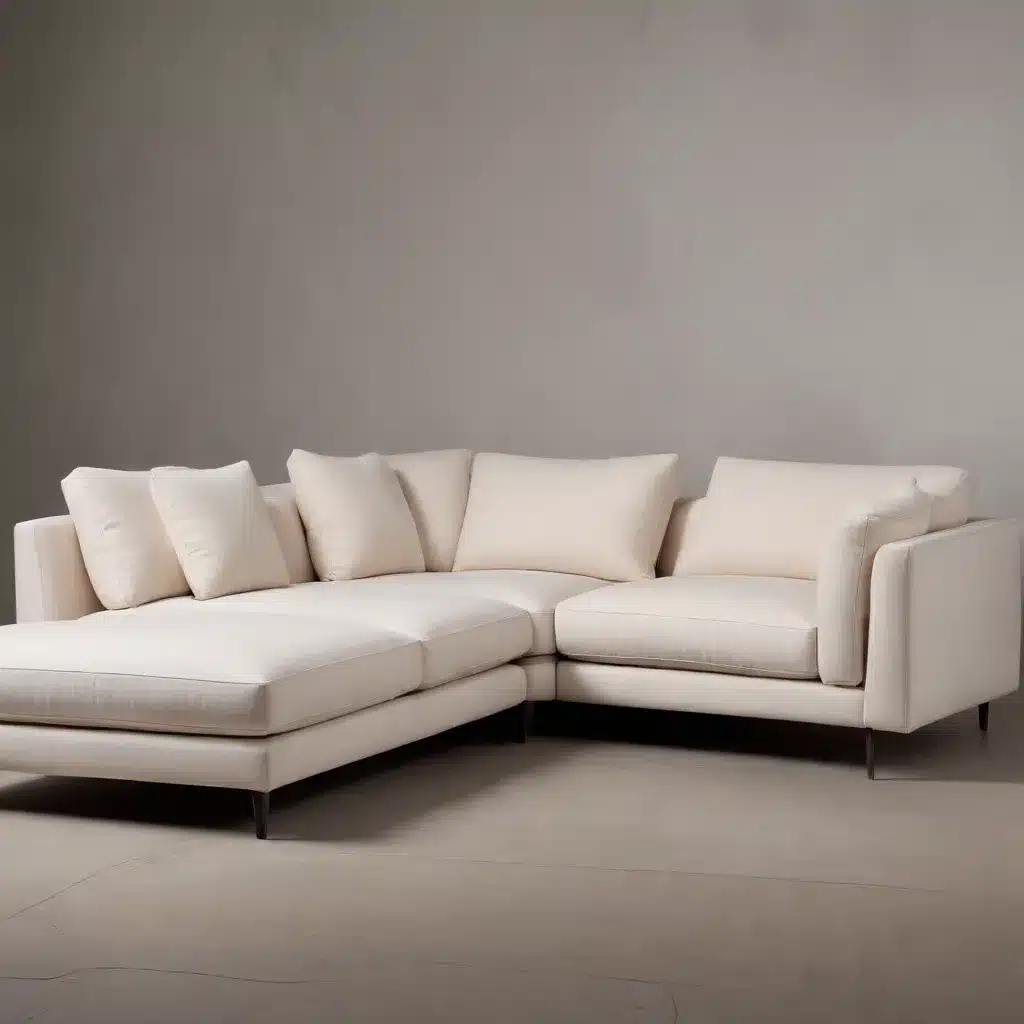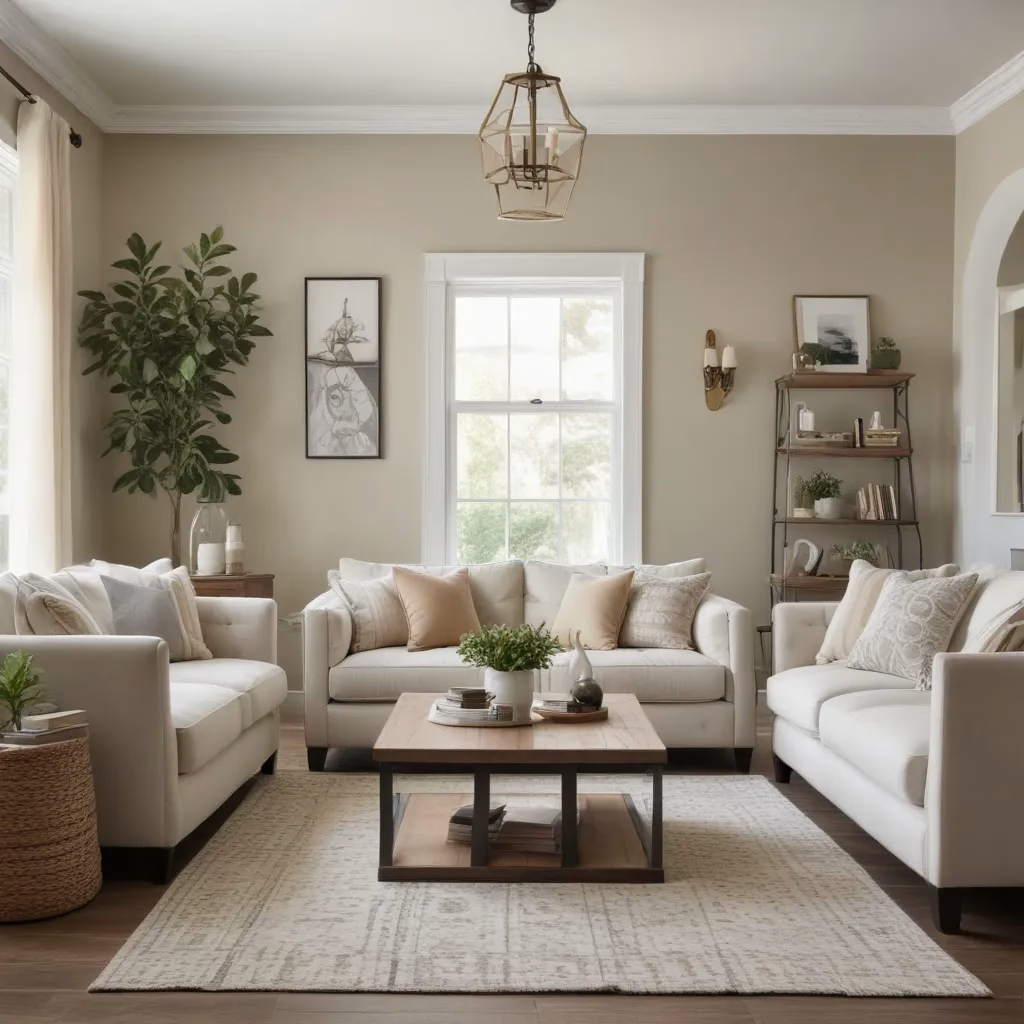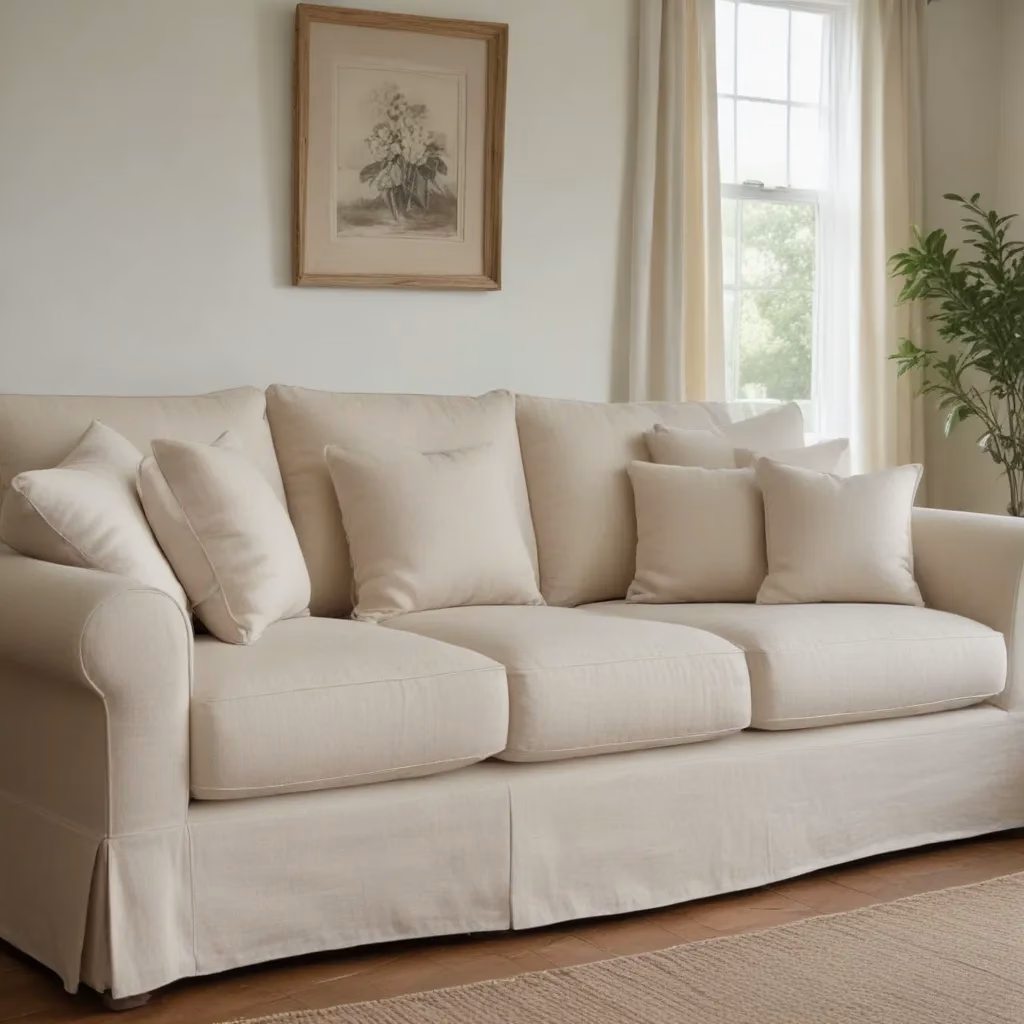
The Evolution of Sofa Arms: A Personal Journey Through Design
As a furniture specialist with years of experience, I’ve witnessed firsthand the remarkable evolution of sofa designs, particularly in the realm of arm styles. The transformation of these seemingly simple elements has completely redefined the classic sofa silhouette, breathing new life into living spaces across the globe.
When I first entered the industry, sofa arms were often an afterthought – functional necessities rather than design features. However, over the years, I’ve seen a dramatic shift in how designers and manufacturers approach arm designs. They’ve become focal points, conversation starters, and the defining characteristic of many modern sofas.
I recall a pivotal moment in my career when I attended a furniture expo in Milan. There, I encountered a sofa with arms that seemed to defy gravity – sleek, angular protrusions that appeared to float effortlessly from the body of the piece. It was a stark departure from the overstuffed, rounded arms I’d grown accustomed to, and it opened my eyes to the possibilities of architectural influence in furniture design.
Blending Form and Function: The Art of Arm Design
In my experience, the most successful arm designs are those that seamlessly blend form and function. It’s not enough for an arm to look striking; it must also provide comfort and support to the user. This delicate balance is where true innovation in sofa design shines.
I’ve had the pleasure of working with clients who initially balked at the idea of unconventional arm shapes. “Won’t they be uncomfortable?” they’d ask, skeptical of anything deviating from the traditional rolled arm. But time and again, I’ve seen their faces light up as they sink into a sofa with sculptural, architectural arms, realizing that comfort and cutting-edge design aren’t mutually exclusive.
One of my favorite examples is a sofa I recommended to a client who ran an art gallery. The piece featured arms that resembled miniature flying buttresses – a nod to Gothic architecture that perfectly complemented the gallery’s aesthetic. Not only did these arms serve as a visual showpiece, but they also provided surprisingly comfortable support for lounging visitors.
Materials Matter: Innovations in Arm Construction
The revolution in arm design isn’t just about shape – it’s also about materials. In my early days, wood and foam were the go-to components for constructing sofa arms. Now, I’m seeing an exciting array of materials being used to create truly unique arm designs.
I recently worked on a project where we incorporated a sofa with arms made from a high-density polymer. This material allowed for incredibly thin, blade-like arms that appeared almost impossibly delicate yet were remarkably strong. The result was a sofa that seemed to float in the room, its barely-there arms creating an illusion of weightlessness.
Another trend I’m particularly excited about is the use of mixed materials in arm design. I’ve seen sofas that combine sleek metal frameworks with warm wooden accents or integrate glass elements for a truly modern look. These combinations not only elevate the visual interest of the piece but also allow for greater flexibility in matching sofas to diverse interior styles.
The Impact of Architectural Arms on Room Dynamics
One of the most fascinating aspects of my job is observing how different sofa designs can completely transform the feel of a room. Architectural arm designs, in particular, have a profound impact on spatial dynamics.
I once worked with a client who had a small living room and was convinced they needed a loveseat to avoid overwhelming the space. Instead, I suggested a full-sized sofa with slim, angled arms that created a sense of openness. The result was a seating area that felt spacious and inviting, despite the room’s limited square footage.
In contrast, I’ve also used sofas with bold, substantial arms to anchor large, open-plan living areas. In one memorable project, we selected a sofa with arms that curved outward, creating natural boundaries in a vast loft space. These arms effectively delineated the seating area without the need for additional furniture or partitions.
Customization: Tailoring Arms to Individual Tastes
One of the most exciting developments I’ve witnessed in recent years is the increasing availability of customizable arm designs. This trend has opened up a world of possibilities for both designers and homeowners.
I recently worked with a client who had a very specific vision for their living room sofa. They wanted arms that echoed the curve of their bay window. Thanks to advancements in manufacturing techniques, we were able to create a bespoke sofa with gently arching arms that perfectly mirrored the room’s architecture.
This level of customization allows for truly personalized furniture pieces that reflect the unique style and needs of each individual. It’s a far cry from the limited options available when I first started in the industry, and it’s a change I wholeheartedly welcome.
The Future of Arm Design: What’s Next?
As I look to the future of sofa design, I can’t help but feel excited about the possibilities that lie ahead. The integration of technology into furniture is an area I’m watching closely. I’ve already seen prototypes of sofas with arms that incorporate wireless charging pads or built-in speakers.
Another trend I anticipate gaining traction is the use of sustainable materials in arm construction. As environmental concerns become increasingly important to consumers, I expect to see more designs that utilize recycled or eco-friendly materials without compromising on style or comfort.
Maintaining Architectural Arms: Tips for Longevity
With innovative arm designs comes the need for specialized care. Throughout my career, I’ve learned that proper maintenance is key to ensuring these architectural elements stand the test of time.
For sofas with metal arm components, I always advise clients to keep a soft, dry cloth handy for regular dusting. This simple act can prevent the buildup of fingerprints and maintain the sleek appearance of the metal.
When it comes to upholstered arms with unique shapes, I recommend using a soft brush attachment when vacuuming to navigate the contours effectively. For spot cleaning, it’s crucial to use a cleaner appropriate for the specific fabric to avoid damaging the material or altering its shape.
Choosing the Right Architectural Arm for Your Space
Selecting the perfect sofa with architectural arms can be a daunting task. Over the years, I’ve developed a few key considerations to help guide my clients through the process:
-
Scale: Consider the size of your room. Slim, minimalist arms work well in smaller spaces, while more substantial designs can help fill larger areas.
-
Existing Architecture: Look for arm designs that complement the architectural features of your home. Angular arms might suit a modern, minimalist space, while softer curves could be more appropriate for a traditional setting.
-
Functionality: Think about how you’ll use the sofa. If you often lean on the arms while reading or working, ensure they’re at a comfortable height and depth.
-
Material Compatibility: Consider how the arm materials will interact with your existing décor. Metal arms can add an industrial touch, while wooden elements bring warmth.
-
Visual Weight: Remember that the arm design affects the overall visual weight of the sofa. Transparent or slim arms can make a sofa appear lighter, while substantial arms ground the piece.
The Role of Architectural Arms in Open Plan Living
In my experience, sofas with distinctive arm designs play a crucial role in open plan living spaces. They can act as visual dividers, helping to define different areas within a large room without the need for physical barriers.
I once worked on a project where we used a sofa with high, wrap-around arms to create a cozy nook within a vast open plan area. The arms acted almost like walls, carving out an intimate seating area that felt separate from the rest of the space.
Another client had a combined living and dining area. We chose a sofa with transparent acrylic arms that allowed light to pass through, maintaining the open feel of the space while still providing definition between the living and dining zones.
Mixing and Matching: Pairing Architectural Sofas with Other Furniture
One question I’m often asked is how to integrate a sofa with unique arm designs into an existing furniture setup. My advice is always to embrace contrast rather than trying to match everything perfectly.
For instance, I once paired a sofa with sleek, metal arms with a set of traditional wingback chairs. The juxtaposition of styles created a dynamic, eclectic look that felt curated rather than matched.
When it comes to coffee tables, I find that simple, streamlined designs often work best with architecturally interesting sofas. This allows the sofa to remain the focal point without competition.
The Psychology of Arm Design: How It Affects Comfort Perception
Throughout my career, I’ve noticed an interesting phenomenon: the design of a sofa’s arms can significantly influence how comfortable people perceive it to be, even before they sit down.
Sofas with wide, padded arms often give an impression of plushness and comfort, inviting people to sink in and relax. On the other hand, sleek, architectural arms can convey a sense of sophistication and formality.
I’ve had clients who were initially hesitant about sofas with minimalist arm designs, worried they wouldn’t be comfortable. However, after experiencing them, many have been pleasantly surprised by how ergonomic and supportive these designs can be.
Color and Texture: Enhancing Architectural Arm Designs
In my experience, the impact of innovative arm designs can be further amplified through thoughtful use of color and texture. I’ve found that playing with these elements can transform a sofa from merely interesting to truly extraordinary.
One project that stands out in my memory involved a sofa with sculptural, wave-like arms. We upholstered the body of the sofa in a rich, deep blue velvet, but chose a contrasting metallic fabric for the arms. The result was stunning – the arms seemed to catch and reflect light, creating a dynamic, ever-changing look as you moved around the room.
Texture can also play a significant role in enhancing arm designs. I once worked with a sofa that had angular, geometric arms. We chose a smooth, buttery leather for the seat and back, but opted for a textured, woven fabric on the arms. This contrast not only highlighted the unique arm shape but also added an extra layer of visual and tactile interest to the piece.
Architectural Arms and Accessibility: Considerations for All Users
As a furniture specialist, I believe it’s crucial to consider accessibility when recommending sofas, particularly those with unconventional arm designs. Over the years, I’ve worked with clients with various mobility needs, and this experience has taught me the importance of balancing style with functionality.
For instance, I once had a client who used a wheelchair and was looking for a sofa that would complement their modern, minimalist home. We found a perfect solution in a sofa with slim, architectural arms that were set slightly back from the front edge of the seat. This design allowed easy transfer from the wheelchair to the sofa, while still maintaining the sleek aesthetic the client desired.
On another occasion, I worked with an elderly couple who were concerned about finding a sofa with arms sturdy enough to support them when standing up. We opted for a design with solid, sculptural arms that not only looked striking but also provided the necessary support.
These experiences have reinforced my belief that good design should be inclusive, catering to the needs of all users without compromising on style.
The Global Influence on Architectural Arm Designs
One of the most exciting aspects of my job is observing how global design trends influence sofa arm styles. Throughout my career, I’ve seen inspiration drawn from a wide range of cultural and architectural traditions.
I remember being particularly struck by a sofa I encountered at a design fair in Tokyo. Its arms were inspired by the graceful curves of traditional Japanese torii gates. This fusion of cultural elements with contemporary design principles resulted in a piece that was both innovative and deeply rooted in tradition.
Similarly, I’ve seen sofas with arms that echo the geometric patterns of Middle Eastern architecture, or the organic shapes found in Scandinavian design. This global cross-pollination of ideas continues to push the boundaries of what’s possible in sofa design.
The Role of Technology in Shaping Arm Designs
As technology continues to advance, its impact on furniture design, particularly in the realm of sofa arms, becomes increasingly evident. In recent years, I’ve witnessed a surge in designs that incorporate cutting-edge manufacturing techniques and smart features.
One particularly memorable project involved a sofa with arms that were 3D printed using a biodegradable polymer. This technology allowed for incredibly complex, organic shapes that would have been impossible to achieve with traditional manufacturing methods.
I’ve also seen an increase in ‘smart’ arm designs. For example, I recently worked with a client to select a sofa with arms that featured built-in USB charging ports and adjustable LED lighting. These tech-integrated arms not only looked sleek but also added a layer of functionality that suited the client’s modern lifestyle.
Architectural Arms and Sustainability: A Growing Trend
In recent years, I’ve noticed a significant shift towards sustainability in furniture design, and this trend is particularly evident in the way sofa arms are being conceptualized and constructed.
I recently collaborated on a project where we used a sofa with arms made from reclaimed wood. The arms featured a beautiful, weathered patina that told a story of their previous life. Not only did this choice align with the client’s eco-conscious values, but it also added a unique character to the piece that couldn’t be replicated with new materials.
Another exciting development I’ve observed is the use of innovative, eco-friendly materials in arm construction. For instance, I’ve seen arms made from compressed agricultural waste or recycled ocean plastics. These materials not only reduce environmental impact but often result in intriguing textures and finishes that add depth to the overall design.
The Art of Proportion: Balancing Arm Design with Overall Sofa Structure
One of the most crucial aspects of successful architectural arm design is achieving the right balance and proportion with the rest of the sofa. Throughout my career, I’ve learned that even the most innovative arm design can fall flat if it’s not properly integrated with the overall structure of the piece.
I once worked on a project where the client fell in love with a sofa that had dramatically oversized, sculptural arms. While the arms were undoubtedly striking, they overwhelmed the rest of the sofa, making it appear imbalanced. We solved this by working with the manufacturer to slightly reduce the scale of the arms, resulting in a piece that was still bold and unique, but more harmonious in its overall design.
Conversely, I’ve also seen sofas where the arms were so minimalist that they seemed to disappear, leaving the sofa looking unfinished. In these cases, I often recommend adding visual interest through contrasting materials or subtle design details to ensure the arms still play their part in the overall aesthetic.
The Future of Sofa Arm Design: My Predictions
As I look towards the future of sofa design, I can’t help but feel excited about the potential innovations in arm design. Based on current trends and emerging technologies, here are a few predictions for what we might see in the coming years:
-
Modular Arm Systems: I anticipate a rise in sofas with interchangeable arm components, allowing users to customize their sofa’s look and function as needed.
-
Biophilic Designs: With an increasing focus on bringing nature indoors, I expect to see more arm designs that incorporate living elements, such as built-in planters or natural materials like stone or live-edge wood.
-
Adaptive Arms: As homes become smarter, I predict we’ll see more sofas with arms that can adapt to different uses – perhaps extending to form a work surface or retracting for a sleeker look.
-
AR Integration: With advancements in augmented reality, we might see sofa arms that can display information or act as control interfaces for smart home systems.
-
Kinetic Designs: I’m excited about the possibility of sofa arms that can move or change shape, adapting to the user’s needs or preferences.
As we continue to push the boundaries of what’s possible in sofa design, I believe architectural arm designs will play an increasingly important role in shaping the future of our living spaces. The intersection of form, function, and innovation in this seemingly simple element of furniture design never ceases to amaze me, and I look forward to seeing what the next generation of designers will create.
For those interested in exploring more about innovative furniture designs and trends, I highly recommend visiting Sofa Spectacular. Their collection showcases some of the most exciting developments in sofa design, including cutting-edge arm styles that are redefining the classic sofa silhouette.



